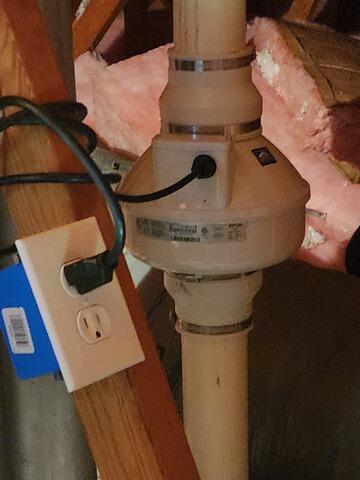Bethesda Radon Mitigation
Challenge
"This house had radon levels exceeding 4 pCi/L, despite having an original radon mitigation pipe installed. However, the pipe was not activated. The radon pipe utilizes the sump pump lid as the extraction point, but the sump lid was improperly installed and essentially left open, allowing radon gas to enter the home and rendering the radon gas pipe ineffective."
Solution
Our solution plan consisted of three steps:
Step 1: We began by installing a fan in the attic radon pipe, which pulls air from the sump pit. The builder had failed to follow code, and the fan’s power outlet was missing. We installed a new power outlet near the radon pipe, secured the pipe, and then installed a radon fan specifically suited for the home’s requirements.
Step 2: Next, we replaced the sump pit cover with a custom-made lid. This involved significant work, including redoing the plumbing for the pump discharge and properly finishing the radon pipe into the sump lid. We ensured everything was air-tight to maximize the efficiency of the radon system. Additionally, we installed a manometer so the homeowner could easily monitor the system’s functionality.
Step 3: Finally, we installed a radon decay products filtration system, which is an electronic radon filter mounted in the HVAC system’s Air Handling Unit (AHU). This filter improves the air quality throughout the house, not just by addressing radon, but also enhancing the overall indoor air environment


